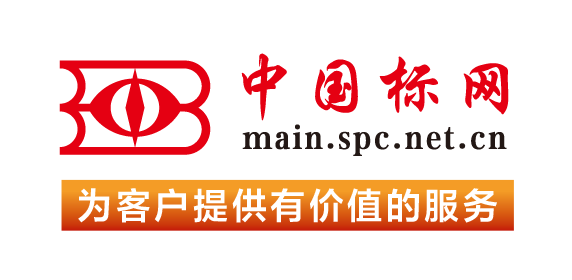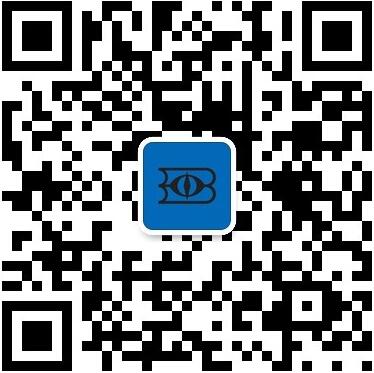【国外标准】 Standard Test Method for Sizing and Counting Particulates in Middle Distillate Fuels and Biodiesel Blend (B6 to B20) Using Continuous Flow and Bottle Sampler Particle Contamination Monitors
本网站 发布时间:
2024-02-28
开通会员免费在线看70000余条国内标准,赠送文本下载次数,单本最低仅合13.3元!还可享标准出版进度查询、定制跟踪推送、标准查新等超多特权!
查看详情>>
适用范围:
5.1 This test method is intended for use in the laboratory or in the field to evaluate the cleanliness of distillate fuels, and liquid biofuels, such as biodiesel and diesel blends. This specific test method and the precision statement applies to off-line analysis.NOTE 5: These PCMs can be used for high pressure on-line applications as well, however the repeatability (r) and reproducibility (R) for on-line application were not established.5.2 An increase in particulate counts can indicate a change in the fuel condition caused for example by contamination during storage or transfer. Potential causes of particulates formation during storage could be “fuel-degradation products,” as described in Specification D975, Appendix X3.5.3 High levels of particles can cause filter blockages (especially when the particles are close in size to the filter porosity rating) and have a serious impact on the life of pumps, injectors, pistons, and other moving parts. Knowledge of particle size in relation to the metallurgy can provide vital information, especially if the hardness of particles is also known from other sources.5.4 This test method specifies a minimum requirement for reporting measurements in particle size bands (A1.2.1). Some specific applications may require measurements in other particle size bands. The particle count from the test should be carefully interpreted by the user as it can potentially over-state risk of abrasive damage or filter blocking due to counting water droplets as well as hard dirt particles.5.5 In situations where there is a requirement for the calibration of the apparatus to be solely in accordance with ISO 11171, Test Methods D7619, IP 565, or IP 577 may be used.1.1 This test method uses specific particle contamination monitors (PCMs) to count and measure the size of dispersed dirt particles, water droplets and other particulates, in middle distillate fuel, in the overall range from 4 µm to 70 µm and in the size bands ≥4 µm, ≥6 µm, ≥14 µm, and ≥30 µm.NOTE 1: The term particle contamination monitor, as used in this test method, is the same as that defined in ISO 21018-4; an instrument that automatically measures the concentrations of particles suspended in a fluid at certain sizes and cannot be calibrated in accordance with ISO 11171 whose output may be as a particle size distribution at limited sizes or as a contamination code.1.2 This test method has interim repeatability precision only, see Section 14 for more information.NOTE 2: ASTM specification fuels falling within the scope of this test method include Specifications: D975, D1655, D3699, D7467, MIL-DTL-83133, MIL-DTL-5624, and distillate grades of D396 and D2880.NOTE 3: For the purposes of this test method, water droplets are counted as particles, and agglomerated particles are detected and counted as a single larger particle. Dirt includes microbial particulates. Although the projected area of a particle is measured, this is expressed as the diameter of a circle for the purposes of this test method. The detector is unable to distinguish between dirt and water particles.NOTE 4: This test method may be used for particle sizes bands up to 70 µm, however the interim repeatability has only been determined for the size bands ≥4 µm, ≥6 µm, and ≥14 µm. All measurements are counts per millilitre.1.3 The values stated in SI units are to be regarded as standard. No other units of measurement are included in this standard.1.4 This standard does not purport to address all of the safety concerns, if any, associated with its use. It is the responsibility of the user of this standard to establish appropriate safety, health, and environmental practices and determine the applicability of regulatory limitations prior to use.1.5 This international standard was developed in accordance with internationally recognized principles on standardization established in the Decision on Principles for the Development of International Standards, Guides and Recommendations issued by the World Trade Organization Technical Barriers to Trade (TBT) Committee.
标准号:
ASTM D8166-22
标准名称:
Standard Test Method for Sizing and Counting Particulates in Middle Distillate Fuels and Biodiesel Blend (B6 to B20) Using Continuous Flow and Bottle Sampler Particle Contamination Monitors
英文名称:
Standard Test Method for Sizing and Counting Particulates in Middle Distillate Fuels and Biodiesel Blend (B6 to B20) Using Continuous Flow and Bottle Sampler Particle Contamination Monitors标准状态:
Active-
发布日期:
-
实施日期:
出版语种:
- 其它标准
- 上一篇: ASTM D8165-22 Standard Test Method for Evaluation of Load-Carrying Capacity of Lubricants Used in Hypoid Final-Drive Axles Operated under Low-Speed and High-Torque Conditions
- 下一篇: ASTM D8167/D8167M-23e1 Standard Test Method for In-Place Bulk Density of Soil and Soil-Aggregate by a Low-Activity Nuclear Method (Shallow Depth)
- 推荐标准
- ASTM D8223-19 Standard Practice for Evaluation of Fire-Retardant Treated Laminated Veneer Lumber
- ASTM D8225-19 Standard Test Method for Determination of Cracking Tolerance Index of Asphalt Mixture Using the Indirect Tensile Cracking Test at Intermediate Temperature
- ASTM D8226-21ae1 Standard Test Method for Measurement of Effects of Automotive Engine Oils on Fuel Economy of Passenger Cars and Light-Duty Trucks in Sequence VIF Spark Ignition Engine
- ASTM D8227-20 Standard Test Method for Determining the Coefficient of Friction of Synchronizer Lubricated by Mechanical Transmission Fluids (MTF) Using a High-Frequency, Linear-Oscillation (SRV) Test Machine
- ASTM D823-18(2022) Standard Practices for Producing Films of Uniform Thickness of Paint, Coatings and Related Products on Test Panels
- ASTM D8232-18 Standard Test Procedures for Measuring the Inclination of Deep Foundations
- ASTM D8236-18 Standard Practice for Preparing an Equilibrium Liquid/Vapor Sample of Live Crude Oil, Condensates, or Liquid Petroleum Products Using a Manual Piston Cylinder for Subsequent Liquid Analysis or Gas Analysis
- ASTM D8239-23 Standard Specification for Performance-Graded Asphalt Binder Using the Multiple Stress Creep and Recovery (MSCR) Test
- ASTM D8240-22e1 Standard Specification for Less-Flammable Synthetic Ester Liquids Used in Electrical Apparatus
- ASTM D8241/D8241M-19 Standard Tables of Body Measurements for Young Men Type, Size Range 32 – 48
- ASTM D8243-19 Standard Test Method for Determination of APS Reductase to Estimate Sulfate Reducing Bacterial Bioburdens in Water – Enzyme-Linked Immunosorbent Assay Method
- ASTM D8247-19 Standard Test Method for Determination of Total Fluorine and Total Chlorine in Coal by Oxidative Pyrohydrolytic Combustion Followed by Ion Chromatography Detection
- ASTM D8252-23 Standard Test Method for Vanadium and Nickel in Crude and Residual Oil by X-ray Spectrometry
- ASTM D8253-21 Standard Test Method for Determination of the Asphaltene Solvency Properties of Bitumen, Crude Oil, Condensate and/or Related Products for the Purpose of Calculating Stability, Compatibility for Blending, Fouling, and Processibility (Manual Microscopy
- ASTM D8254-19 Standard Test Method for Flash and Fire Points of Asphalt by Cleveland Open Cup Tester
 购物车
购物车 400-168-0010
400-168-0010













